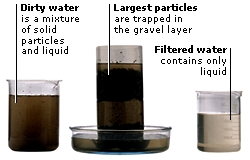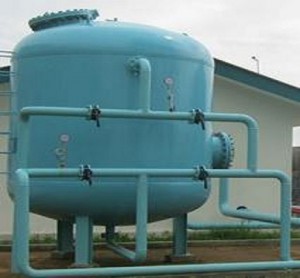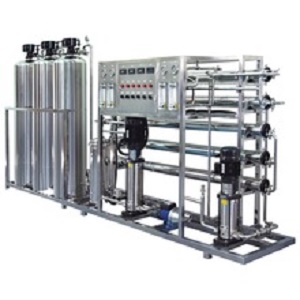Filtration:
Water purification is the process of removing undesirable chemicals, biological contaminants, suspended solids and gases from contaminated water. The goal is to produce water fit for a specific purpose. Most water is disinfected for human consumption (drinking water), but water purification may also be designed for a variety of other purposes, including fulfilling the requirements of medical, pharmacological, chemical and industrial applications. The methods used include physical processes such as filtration, sedimentation; biological processes such as slow sand filters or biologically active carbon; chemical processes such as coagulation, floculation and chlorination and the use of electromagnetic radiation such as ultraviolet light.
Purifying water may reduce the concentration of particulate matter including suspended particles, parasites, bacteria, algae, viruses, fungi as well as reducing the amount of a range dissolved and particulate material derived from the surfaces that come from runoff due to rain.
Media Filtration:
A media filter is a type of filter that uses a bed of sand, peat, shredded tires, foam, crushed glass, geo-textile fabric, crushed graniteor other material to filter water for drinking, swimming pools, aquaculture, irrigation, storm water management and other applications.
Screen/Disc Filtration:
A screen filter is a type of filter using a rigid or flexible screen to separate sand and other fine particles out of water for irrigation or industrial applications. These are generally not recommended for filtering out organic matter such as algae, since these types of contaminants can be extruded into spaghetti-like strings through the filter if enough pressure drop occurs across the filter surface. Typical screen materials include stainless steel (mesh), polypropylene, nylon and polyester.
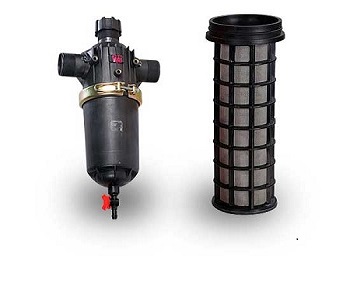
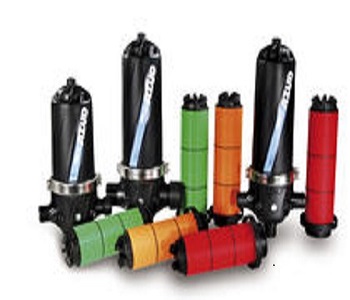
Micro Filtration:
Micro filtration (commonly abbreviated to MF) is a type of physical filtration process where a contaminated fluid is passed through a special pore-sized membrane to separate microorganisms and suspended particles from process liquid. It is commonly used in conjunction with various other separation processes such as ultra filtration and reverse osmosis to provide a product stream which is free of undesired contaminants.
Membrane Filtration:
Membrane separation processes operate without heating and therefore use less energy than conventional thermal separation processes such as distillation, sublimation or crystallization. The separation process is purely physical and both fractions (permeate and retentate) can be used. Cold separation using membrane technology is widely used in the food technology, biotechnology and pharmaceutical industries. Furthermore, using membranes enables separations to take place that would be impossible using thermal separation methods.
In waste water treatment, membrane technology is becoming increasingly important. With the help of ultra/micro filtration it is possible to remove particles, colloids and macro molecules, so that waste-water can be disinfected in this way. This is needed if waste-water is discharged into sensitive waters especially those designated for contact water-sports and recreation.
